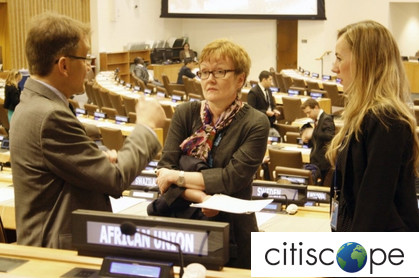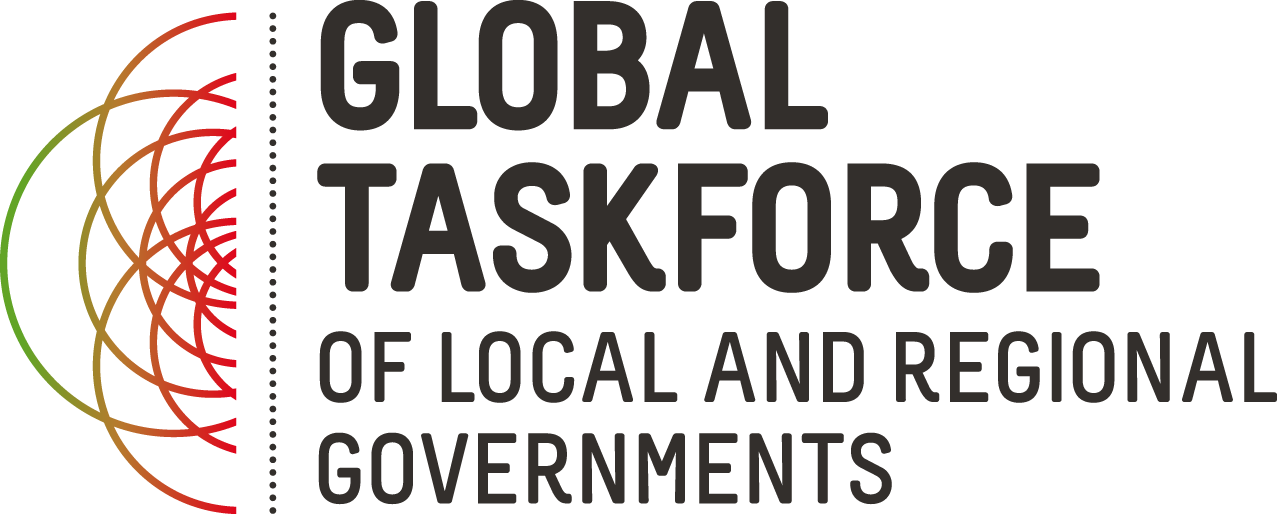
 By Carey Biron, Carey Biron is a news editor for Citiscope.
By Carey Biron, Carey Biron is a news editor for Citiscope.
Sufficient trillions of dollars for anti-poverty, climate and broad development efforts worldwide are being debated in the run-up to a key conference in Addis Ababa this July. In the process, a parallel key issue has emerged: Where’s the voice for cities, where the lion’s share of future development must occur?
The negotiations are part of what’s known as the Financing for Development process, a watershed set of talks aimed at figuring out a new way to pay for the infrastructure, education, health and other development programmes that will be necessary over the coming decade and more.
The draft negotiating text for the Financing for Development process was released last month. Since then, government negotiators have met repeatedly to try to hash out differences. Last week they also met in joint sessions with those working on a parallel but intimately connected track: negotiating the new Post-2015 Development Agenda, which will define the world’s development strategy for the coming decade and a half.
But those following the Financing for Development process say significant work remains to be done before an intended agreement can be struck in July in Addis Ababa. That’s a problem for those working on the new development agenda, given that the Addis agreement is supposed to pay for the extensive strategies under consideration.
In addition to the cities question, still under negotiation are some of the most basic questions for the global development process: How much financial responsibility will be shouldered by developing countries themselves? How to strengthen the participation of the private sector in development aims without risking privatizing the whole process? To what extent can global development continue to depend on traditional Western donors when those governments are continuing to reel from their own funding shortages?
“There is hardly any mention of local government or of the local organisations representing those ill-served or unserved.’” David Satterthwaite, Senior fellow, International Institute for Environment and Development
Such questions are both structural and ideological. And behind the scenes, government, multilateral and civil society actors are currently engaged in a breakneck process to arrive at some negotiated answers. Yet these talks are largely running under the radar, supplanted even in development circles by the simultaneous negotiations over the framework the Financing for Development process is meant to pay for: the Sustainable Development Goals (SDGs), the “COP 21” climate accord and the New Urban Agenda.
The talks around the SDGs and the climate agreement are set to conclude later this year, and hence those negotiations are sucking much of the air out of the room. Yet their results are meaningless without real funding strategies. According to recent estimates, paying for just one part of this Post-2015 Development Agenda will be astronomically expensive. The 17 draft SDGs and their concomitant 169 draft targets could cost upwards of USD 1 trillion every year for 15 years.
A new report from the Sustainable Development Solutions Network (SDSN) — one of the most authoritative voices on the issue — likewise finds that monitoring costs alone for the SDGs will entail a massive new fiscal responsibility. Poor countries will need to spend some USD 1 billion a year just to upgrade their current statistical systems, SDSN finds.
Localizing financing
The implications of the Financing for Development process for the urban movement are particularly significant. A central aim of the Post-2015 Development Agenda, after all, is the elimination of extreme poverty within just a decade or two.
As such, a huge number of the SDGs and other core parts of the new development strategy revolve around or are greatly influenced by what takes place in urban areas — in terms of sanitation, education, transportation, housing, energy use and much more. These impacts go beyond even the draft stand-alone urban SDG, Goal 11.
Yet given the current Financing for Development negotiating text, serious questions are being raised about how exactly funding for this type of development will actually get to the city level — about the mechanisms for “localizing” development funding.
“There are so many goals that require effective, accountable and well-financed local institutions but no mention of these. There is hardly any mention of local government or of the local organisations representing those ill-served or unserved,” David Satterthwaite, a senior fellow at the International Institute for Environment and Development’s Human Settlements Group, warned recently.
“At least for urban areas, these are the crucial actors. These are the local organisations that need finance. Yet the draft Addis Ababa Accord is all around national governments, international agencies and the private sector.”
The draft text does pledge to create mechanisms to assist local authorities, particularly around infrastructure development, local taxation and broader financial management. Nonetheless, many advocates are expressing concern that the draft remains worryingly vague on these issues, and that it doesn’t go nearly far enough in recognizing the role and potential of local authorities in implementing a range of development strategies.
“The urban potential in terms of social, economic, and environmental development is not enough exploited and suffers investment deficiencies,” the Global Taskforce of Local and Regional Governments, a network created to advocate around the new development agenda, states in one of many insertions its members are suggesting be made to the Addis draft text. “While many of the local investments are in the hands of local governments due to the ongoing process of decentralization, local financing systems are far from being adequate to the needs and challenges.”
In the run-up to the Addis Ababa negotiations, the Global Taskforce’s members are particularly focused on highlighting the crushing infrastructural investments that are going to be necessary in coming years in developing countries. Such investments are a bedrock requirement, the group says, if the international community wants to come anywhere near achieving anti-poverty and climate-related goals.
“Many countries face a sizable infrastructure gap and anticipate new demands from population growth and continued urbanization (more than 2.5 billion urban dwellers by 2050, mostly in developing countries),” the group states in formal comments explaining the previously noted suggested insertion. “Estimated requirements vary, but some are as high as $90 trillion.”
Where that money will come from is just one question here. Who will decide on how, and where, it gets spent are closely related concerns that many are now looking to the July talks in Addis Ababa to answer.
The third round of drafting for the Financing for Development process takes place in mid-June.
Source: Citiscope










